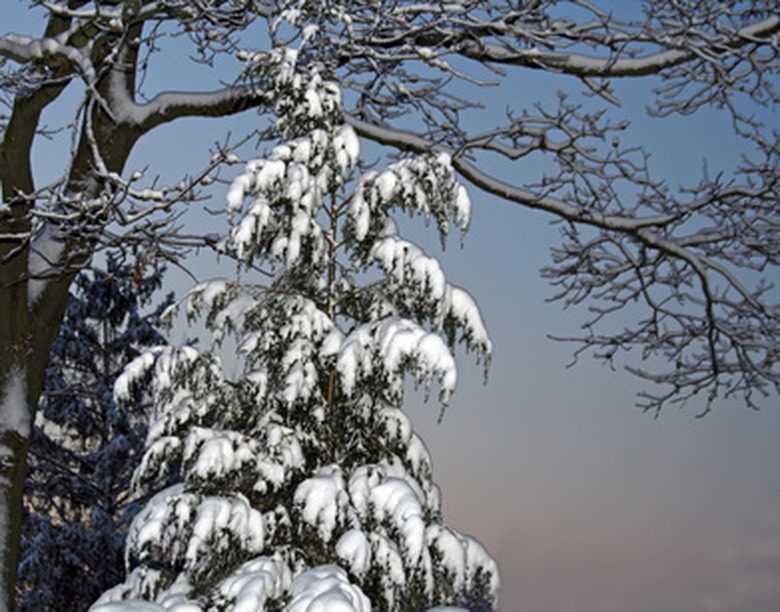Balsam Fir Tree Facts
The balsam fir tree (Abies balsamea) is an important evergreen species in Canada and parts of the United States, serving as Christmas trees and used for paper pulp and construction. As an ornamental, the balsam fir makes a good specimen tree for large and small landscapes in the colder portions of the Northeast, where the tree is the lone native fir. The balsam fir is a much more attractive tree when it is younger, though, as it will eventually lose its conical shape.
Identification
In the wild, the balsam fir can grow to 60 feet tall and be as wide as 30 feet, says the University of Connecticut Plant Database site. The needles are flat and may be as long as an inch and a half, with a dark green top and a pair of light bands running on the undersides. The purplish cylindrical cones are from 2 to 4 inches long and grow upright on the branches. The bark turns a gray to red-brown shade as the tree matures.
- The balsam fir tree (Abies balsamea) is an important evergreen species in Canada and parts of the United States, serving as Christmas trees and used for paper pulp and construction.
Shallow Roots
Plant a balsam fir where it will have some protection from the wind if you choose one as an ornamental. The tree's root system is typically shallow, leaving the species vulnerable to blowing down during storms. Another factor that makes the tree able to fall over in high gusts is constantly wet ground. One benefit of the shallow roots is that you will have little problem transplanting a balsam fir.
Effects
In addition to insect pests, the balsam fir will appeal to deer. Hungry browsing white-tailed deer can easily damage the younger specimens if you live where deer populations are a problem. Bugs such as the spruce budworm, which ironically prefers firs to spruce trees, are a major threat. The spruce budworm can defoliate the balsam fir and cause it to wither and eventually die.
- Plant a balsam fir where it will have some protection from the wind if you choose one as an ornamental.
- Hungry browsing white-tailed deer can easily damage the younger specimens if you live where deer populations are a problem.
Warning
Always be careful when trimming and mowing around a balsam fir. Any damage that results in an open wound on the trunk can lead to a lethal fungus called red heart fungus entering the tree. This particular agent precipitates serious decay, as can other fungi. All balsam firs are susceptible to root rot, but the National Forest Service website warns that very dry sites increase the chances of this occurring greatly.
Considerations
The fact that many species of birds and small mammals like voles, mice and chipmunks use a balsam fir for cover and devour its seeds makes this species a good choice to plant in groves, where you can attract wildlife. The tree needs a cold climate to survive and will do poorly where the summer is hot and/or the air is always dry. Balsam firs are available in dwarf cultivars that are suitable for such settings as rock gardens.
- Always be careful when trimming and mowing around a balsam fir.
- All balsam firs are susceptible to root rot, but the National Forest Service website warns that very dry sites increase the chances of this occurring greatly.
References
- National Forest Service: Balsam Fir
- "Trees of North America"; C. Frank Brockman; 1996
- "National Audubon Society Field Guide to Trees"; Elbert L. Little; 2008
